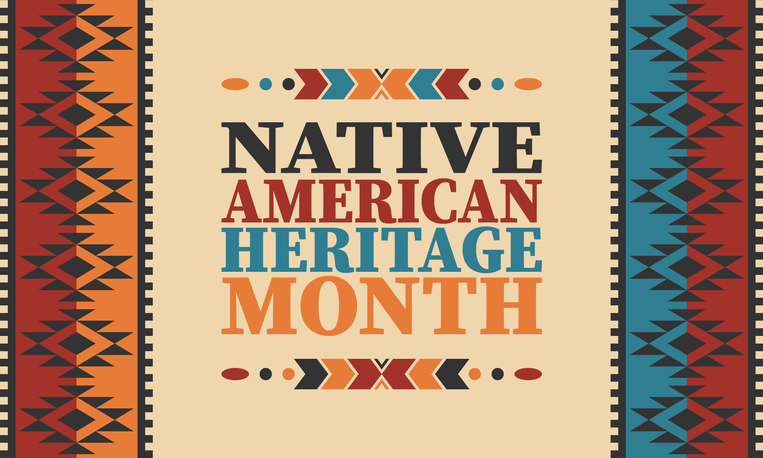How Historical Trauma Impacts Native Americans Today
November is Native American Heritage Month and one issue impacting many Native American is the historical trauma associated with American Indian boarding schools operated by the U.S. government.

As many as 100 American Indian residential schools operated in the U.S. from the mid-1800s until the 1960s. Interior Secretary Deb Haaland, a member of the Laguna Pueblo tribe, noted in a memo earlier this year that the purpose of these boarding schools “was to culturally assimilate Indigenous children by forcibly relocating them from their families and communities to distant residential facilities where their American Indian, Alaska Native, and Native Hawaiian identities, languages, and beliefs were to be forcibly suppressed.”1
In a recent article in Psychiatric News, psychiatrists George “Bud” Vana, M.D., and Dakotah Lane, M.D., both working at the Lummi Tribal Health Clinic, discuss how the trauma from boarding schools continues to play out today.2 Lane and Vana explain that “In practice, these schools did all that they could to prevent American Indian children from using their tribal language and observing cultural practices, instead using Christian Euro-American practices, ideas, and corporal punishment.”
Decades after the schools closed, “the legacy of Indian boarding schools remains,” Haaland notes, “manifesting itself in Indigenous communities through intergenerational trauma, cycles of violence and abuse, disappearance, premature deaths, and other undocumented bodily and mental impacts.”
U.S. Department of Interior Indian Boarding School Initiative
In June of this year, Secretary Haas established a federal initiative to examine the history and impact of the boarding schools. “The Department of the Interior (Department) must address the intergenerational impact of Indian boarding schools to shed light on the traumas of the past.… While it may be difficult to learn of the traumas suffered in the boarding school era, understanding its impacts on communities today cannot occur without acknowledging that painful history.”1 The federal effort will work to identify boarding school facilities and sites, including possible student burial sites near school facilities, and the identities and tribal affiliations of children interred at these sites.
The boarding schools are one of many governmental injustices committed against tribal communities, Lane and Vana note, but a better understanding of the historical cultural wound of the boarding schools has helped them “communicate with and be of service to their patients and to understand their individual resilience and their culture’s resilience.”
Discrimination and disparities persist today
American Indians and Alaska Natives (AIAN) continue to face significant discrimination and disparities in mental health and health care today. In 2020, about one in nine (11.4%) AIAN adults had an unmet need for mental health services, which is more than any other racial/ethnic group, except people of 2 or more races.3 A study from 2019 found that discrimination and harassment were widely reported by Native Americans, including disparities compared to whites in fair treatment by institutions, particularly with health care and with police/courts.4 More than one in five Native Americans (23%) reported experiencing discrimination in medical encounters, while 15% avoided seeking health care for themselves or family members due to anticipated discrimination.
Among Native American high school students:5
- AIAN were much more likely to be bullied on school property: 32% of AIAN youth versus 20% among youth overall.
- 21% of AIAN youth reported experiencing online bullying compared to 15% of youth overall.
- 35% of AIAN youth seriously considered suicide in the last year compared to 19% of all youth.
To learn more about mental health care for AIAN people, visit SAMSHA. Psychiatrists can learn about treating AIAN patients on APA’s Diversity & Health Equity, Indigenous Patients Education page.
References
- Department of the Interior. Memorandum from the Secretary of the Interior: Federal Indian Boarding School Initiative. June 22, 2021
- Vana, G. and Lane, D. What Do American Indian Boarding Schools a Century Ago Have to Do With Dysregulated Children Today? Published Online:23 Sep 2021 https://doi.org/10.1176/appi.pn.2021.10.40
- Substance Abuse and Mental Health Services Administration. National Survey on Drug Use and Health, 2020. Detailed Tables.
- Findling, M.G., et al. Discrimination in the United States: Experiences of Native Americans. Health Serv Res. 2019 Dec;54 Suppl 2(Suppl 2):1431-1441. DOI: 10.1111/1475-6773.13224
- Centers for Disease Control and Prevention. Youth Risk Behavior Surveillance System. 2019 Data.
